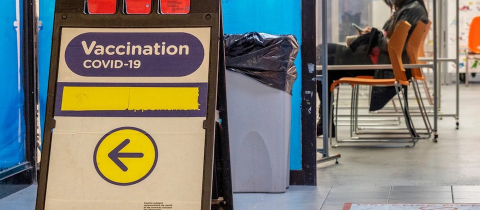Even before the panic due to COVID-19, “virus” was a scary term. That’s because we have all had some sort of battle with a virus and the experience was not enjoyable. However, there are times when infection with a virus can be put to advantage.
Viruses are microscopic infectious agents that cannot replicate unless they invade the living cells of another organism. Therefore, to replicate in the human body, they have to learn to recognize specific cell types in our body, enter the cells in question, and then hijack the cellular machinery to do their bidding. The host cells are thus unable to perform their regular functions and they suffer. Given that viruses have developed these sophisticated mechanisms to invade our cells, scientists wondered whether they could use the viruses to carry out all their actions, that is recognize the cell, enter it, hijack the cellular machinery, but then instead of executing viral commands, deliver a different message, a message that would be beneficial to the cell. The “message” in this case would be a gene that carries instructions to alter cellular function. This was the thought process that led to the use of viruses to deliver intact versions of genes to patients who may have inherited a faulty one, in other words, gene therapy.
Consider the example of a faulty gene that can cause an individual to suffer from impaired vision at birth that continues to worsen progressively with time. The condition is called “Leber congenital amaurosis” (LCA) and is a result of a lack of function of RPE65, an enzyme that is critical for the eye to respond to light in a manner that enables vision. Scientists delivered the intact version of this gene to blind briard puppies, the only canine species that suffer from the same ailment. The blind puppies that previously were unable to avoid obstacles in their paths were now racing across the room. In 2017, the FDA approved a treatment based on the use of a virus to deliver the intact version of the gene to people afflicted with LCA. A few drops of this virus delivered to the eyes of a blind patient can restore vision.
Another dramatic example is the case of inheriting a faulty or mutant version of the survival motor neuron 1 (SMN1) gene that is crucial for the function of motor neurons in the spinal cord. Motor neurons typically stimulate muscle cell activity and are unable to do this without an intact SMN1. In babies born with this condition, called spinal muscular atrophy, lack of stimulation by the nerve cells results in muscle weakness that prevents the carrying out of basic functions such as sitting up. The illness can be severe enough to result in death if left untreated. Our trusted delivery agent, the virus, can now introduce the correct version of the gene and help these children live.
Finally, a Canadian story. There is a rare ailment characterized by the deficiency of an enzyme involved in lipid metabolism that causes elevated levels of fat in the blood and can result in severe pancreatitis. Unfortunately, this is relatively common in the Saguenay region of Quebec, given the small number of families that were the founders of the entire population of the region. As luck would have it, a Canadian scientist, Dr. Michael Hayden (University of British Columbia and the BC Children's Hospital) was able to identify the enzyme (lipoprotein lipase), whose malfunction is responsible for this condition, paving the way for a cure: the delivery of the intact version of the gene. Viral vectors, once again have been able to deliver the gene, resulting in the lowering of lipid levels in the blood and relief to patients.
Although many of these treatments are not available to the public at large, due to the prohibitive cost, the possibilities for viral gene delivery are endless. This piece is not meant to catalogue them all. Instead, it is meant to put in a good word for viruses at a time when they are looked upon as the enemy.
Dr. Alaka Mullick is a cell physiologist at the National Research Council.







